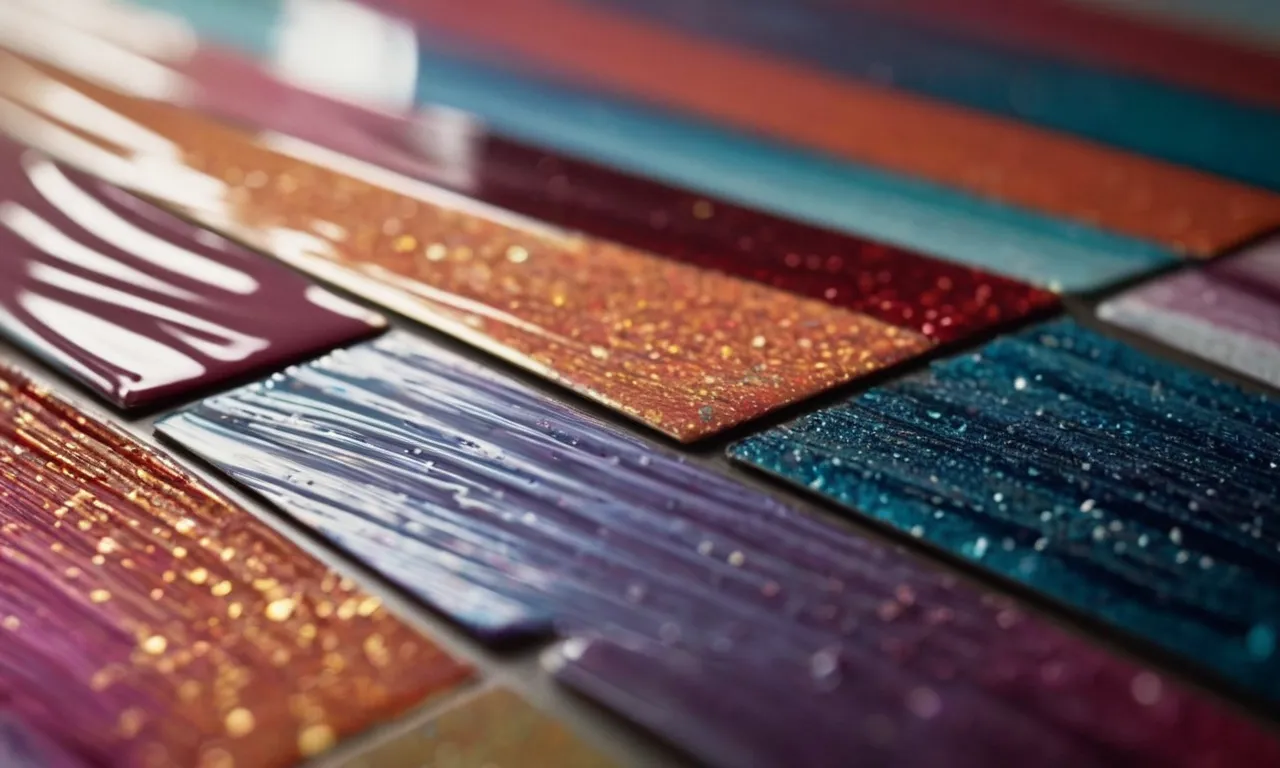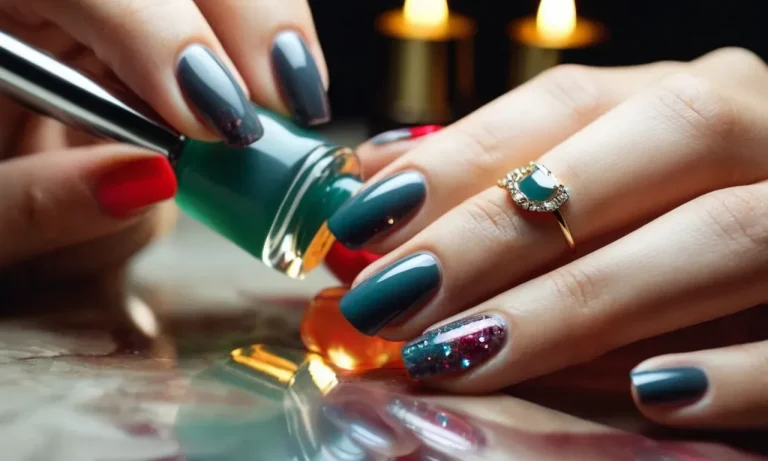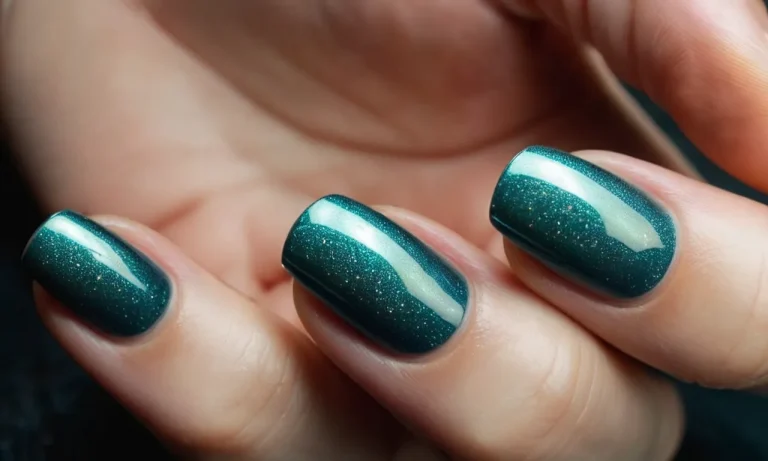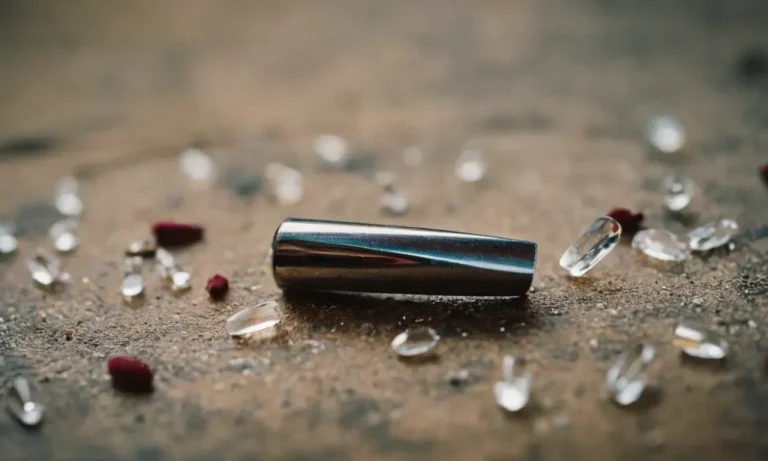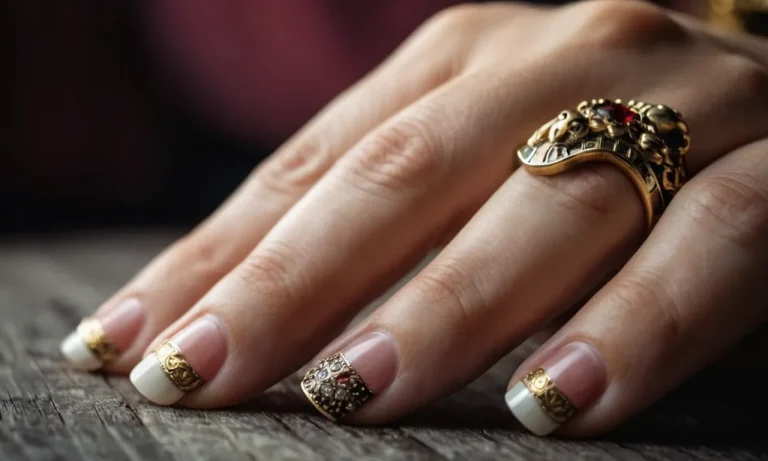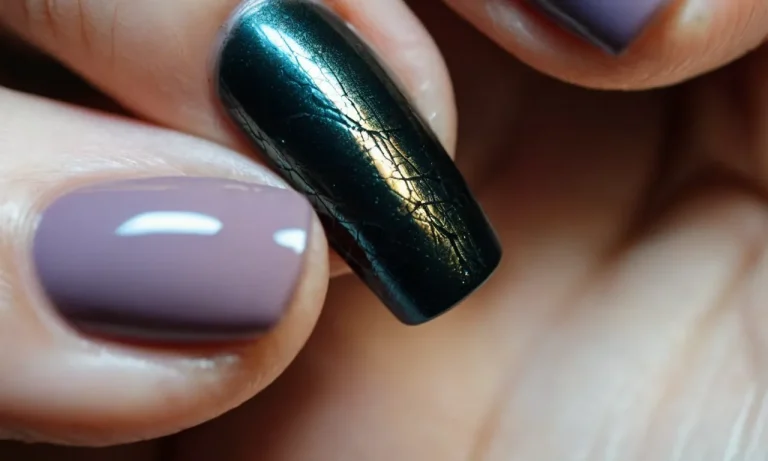How To Get Nail Polish Off A Table Without Remover
Oh no, you’ve accidentally spilled nail polish on your nice wooden table and you don’t have any remover on hand. Don’t panic! Getting nail polish off household surfaces like tables without harsh chemicals is totally doable with a few common household items.
If you’re short on time, here’s a quick answer to your question: use rubbing alcohol, toothpaste, baking soda, or white vinegar to gently scrub the nail polish stain off the table. Test on an inconspicuous area first.
In this comprehensive guide, we’ll go over several effective methods for removing nail polish from wood, glass, plastic, and other table materials safely and easily using things you likely already have at home.
We’ll also provide tips on how to avoid spills in the future and properly care for your tables.
Assess the Spill and Table Material
Determine nail polish color, finish, and dryness
When attempting to remove nail polish from a table, first take note of the color, finish, and dryness of the spill. Darker shades like reds, blacks, and purples tend to stain surfaces more stubbornly than lighter tones. Metallic and glitter polishes also prove trickier to take off.
In terms of finish, matte and textured polishes seep more deeply into porous surfaces like wood over glossy varieties. Checking how dry the spill is provides clues as to how likely it’s bonded to the furniture – the longer it’s been there, the harder it will be to remove.
Identify table material
It’s crucial to correctly identify your table material before taking any removal action. Common tabletop surfaces include:
- Wood – vulnerable to staining but removable with solvents
- Glass – slick surface that polish usually scrapes off
- Marble – porous and prone to staining
- Laminate – durable synthetic often damage-resistant
Wood and marble especially can become permanently damaged if the wrong chemicals are applied. Checking underneath the table if unsure can clarify the construction material. The polish removal method will vary greatly depending on whether you’re working with natural wood versus a synthetic laminate.
Remove Wet Nail Polish
Use a paper towel or cloth
If you’ve just applied nail polish and made a mess, one of the easiest ways to remove it from a table is by using a paper towel or soft cloth. Gently blot at the wet polish – don’t rub, as this will spread it further. The polish should transfer onto the paper towel or cloth.
You may need to use a few to soak up all of the excess polish. Paper towels work great for minor fresh spills.
Try nail polish remover alternatives
If the spill has dried, you’ll need a bit more muscle. Some household products can break down dried nail polish effectively:
- Rubbing alcohol – The high alcohol content helps dissolve the polish. Dip a cloth in rubbing alcohol and rub gently until the stain lifts.
- Acetone-free nail polish remover – Look for a gentle, acetone-free formula. Test on an inconspicuous area first to ensure it doesn’t damage the table’s finish.
- Cooking oil – Dab a small amount of vegetable, olive or coconut oil onto the stain. Let it sit for 1-2 minutes, then wipe away. The oil helps loosen the polish.
- WD-40 – Spritz a small amount onto a paper towel, then lightly rub the stain. WD-40’s lubricating properties help break down the polish.
You may need to reapply and rub multiple times to fully remove dried polish. Always spot test these homemade solutions first.
Use oil or alcohol
Two of the most effective nail polish removers are oils and alcohols:
- Oils – Vegetable, olive, coconut, and other plant-based oils can break down nail polish. Apply a small amount to a cloth, then gently rub the stain until it lifts. Oils are generally safe for most table finishes.
- Alcohol – Rubbing alcohol, vodka, or denatured alcohol work quickly to dissolve polish. Dip a cloth in alcohol and rub carefully on the stain. Be cautious using alcohol on delicate finishes like shellac or veneer.
You can also buy commercial nail polish remover wipes that contain oil or alcohol for quick clean-up. Look for acetate- or oil-based wipes if you want something gentler than acetone. Test removers in an inconspicuous spot first to ensure compatibility with your table’s finish.
With some patience and the right homemade remover, you can get dried nail polish off a table without damaging the surface. Act quickly when dealing with fresh spills for easiest cleanup. And next time, keep remover wipes handy so you can tackle polish mishaps immediately!
Remove Dry Nail Polish
Rub with non-acetone remover
If you have access to a gentle non-acetone nail polish remover, this can be effective for removing dried polish from surfaces. Look for removers labeled as “acetone-free” and test on an inconspicuous area first.
Gently rub the surface with a cotton ball soaked in the non-acetone polish remover, using light pressure. Reapply as needed until the polish begins to lift. Take care not to rub too hard, as this could damage some table finishes.
Use toothpaste
Believe it or not, toothpaste contains mild abrasives that can help scrub away dried nail polish. Choose a white toothpaste rather than a gel. Apply a small amount directly onto the dried polish, then gently rub it with a soft cloth or cotton ball.
The abrasives help remove the polish without being too harsh on surfaces. Reapply more toothpaste as needed. Once finished, wipe the area clean with a damp cloth. This works best on minor polish stains.
Make a baking soda paste
Baking soda is a versatile household cleaner, and its mild abrasive properties allow it to tackle dried nail polish as well. Mix baking soda with just enough water to form a paste. Use a soft cloth to gently rub the paste onto the affected area, using light pressure.
Allow it to sit for a few minutes to help dissolve the polish. Wipe clean with a damp cloth once finished. For tougher stains, leave the paste on for longer before wiping away.
Try vinegar
Distilled white vinegar is an all-purpose cleaner that can also be helpful for dried nail polish stains. Dip a soft cloth into undiluted vinegar and dab at the polish. Allow it to sit for 5-10 minutes. The acetic acid in vinegar helps break down residues.
Once time has passed, use a damp cloth to wipe the area down. For tougher stains, repeat as necessary. Be cautious using vinegar on surfaces that could be etched by acids, like marble.
When attempting to remove nail polish from household surfaces, always exercise caution and test products on an inconspicuous spot first. Acting quickly with household solutions can often tackle fresh spills easily. But dried, stubborn stains may require specialty cleaners found at hardware stores.
Prevent future stains by using protective pads or covers when doing manicures.
Avoid Future Nail Polish Spills
Work in designated area
Selecting a designated area for nail polishing can help avoid accidental spills in the future. An ideal spot would be a table or countertop that is not used for food preparation or eating. Protect the surface by placing an old towel or rag underneath.
Having a contained workspace just for manicures reduces the chances of knockovers happening elsewhere in your home. Who wants to risk ruining their dining table or computer keyboard with an errant elbow? Setting up a pampering zone shows care and consideration for your furnishings.
Use protection under hands
Applying protection under your hands is a pro tip for neat and tidy nail polish application. Rest your hands on a paper towel, cloth, or pad while working. This absorbs any drips or spills before they can stain the table.
It also gives you a disposable surface to wipe off the brush when pulling it out of the bottle. Some people use adhesive shelf liner under their hands since it can grab leaked polish more effectively. Just remember to use a fresh sheet each time for best results.
With protection below, you can paint with confidence and not stress about drips.
Store polish securely
How you store nail polish when not in use can prevent accidental spills on surfaces. Always securely cap bottles and stand them upright in a caddy, organizer or box. Storing bottles on their side leaves them prone to leaking and makes a messy situation more likely.
Keep the collection someplace contained like a drawer, cabinet or closet. This keeps bottles upright and free from being knocked over by bumping into them. A sturdy container also prevents shocking spills if the storage spot is jostled.
So be diligent about tightening lids and designating a safe nail polish station.
Consider clear coats
Opting for clear nail polish sometimes rather than colorful lacquer is an easy way to avoid potential spills. Clear top and base coats have all the shine without the staining risk. They create a polished look without an anxious painting session.
So break out the transparent glazes for low-stress manicures. Another option is peel-off base coats that allow the polish to be removed intact. The plastic-like film peels off in one piece, taking all traces of color with it. So you get a fresh look without worrying about stains.
Disposable gloves can also minimize skin contact when using dark bold polishes. Thinking ahead lets you focus on creativity, not cleanup.
Maintain and Protect Tables
Dust regularly
Dusting your tables regularly is key to keeping them looking their best. Over time, dust can build up and make wood tables appear dull and worn. Use a microfiber cloth or duster specifically made for wood furniture once a week to wipe away dust and debris.
This simple act keeps tables clear of dust bunnies and maintains the beautiful wood grain.
Use coasters under drinks
Putting cold beverages directly on wood tables can damage the finish over time, leaving unsightly white rings or stains. Protect your surfaces by always using coasters under glasses, mugs, and bottles. Absorbent cork or felt coasters work best to prevent condensation from touching the wood.
Encourage family and guests to use coasters to preserve your tables.
Apply wood conditioner
Over time, wood tables can dry out from exposure to sunlight, heaters, and air conditioning. Using a wood conditioner or polish every couple of months nourishes the wood and prevents cracks and splits.
Apply a thin coat with a soft cloth and let it soak in for a few minutes before buffing lightly with a clean cloth. This restores essential oils in the finish and keeps tables looking their vibrant best.
Refinish periodically
No matter how careful you are, wood tables will eventually start to show scratches, cloudiness, and wear in the finish. When this happens, consider refinishing the surface to restore its original beauty.
Lightly sand the existing finish, vacuum up dust, wipe clean, and apply new coats of polyurethane or varnish. This renewed protective layer makes the wood look freshly finished. Plan to refinish dining tables every 5-10 years depending on use.
Conclusion
Removing nail polish from household surfaces and furniture can seem daunting, but with a few simple homemade solutions, you can easily erase spills from wood, glass, laminate, and other tables. Always start with the gentlest method first, test in an inconspicuous spot, and take steps to avoid future polish mishaps.
With the right techniques and regular table care, your surfaces will look pristine again in no time!

